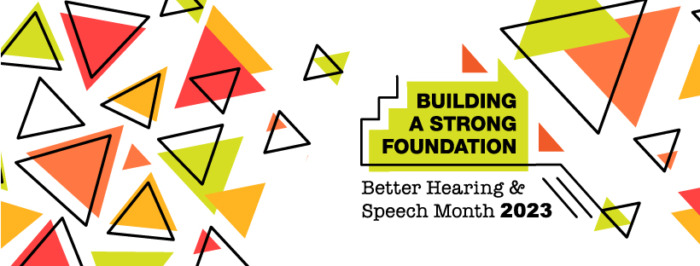
Nearly 100 years ago, the American Speech-Language-Hearing Association (ASHA) designated May as Better Speech and Hearing Month, which is fortunate because awareness of speech and hearing impairment didn’t always include the most sophisticated approaches to assistance.
From gargling with a mouthful of pebbles and employing electroshock therapy to olive oil injections in the ears and artificial eardrums, earlier treatments for speech and hearing impairment were rather unorthodox. This month, we can fortunately raise awareness of far more advanced forms of intervention and assistive technology for people who are speech-impaired and/or hard of hearing.
Baby Steps Toward Communication
In Indiana, hearing loss or impairment is a matter explored right upon birth with an auditory screening. If the newborn does not pass, they are referred to an audiologist for further testing. The course of action from there typically involves hearing aids or a cochlear implant as well as the statewide early intervention program First Steps.
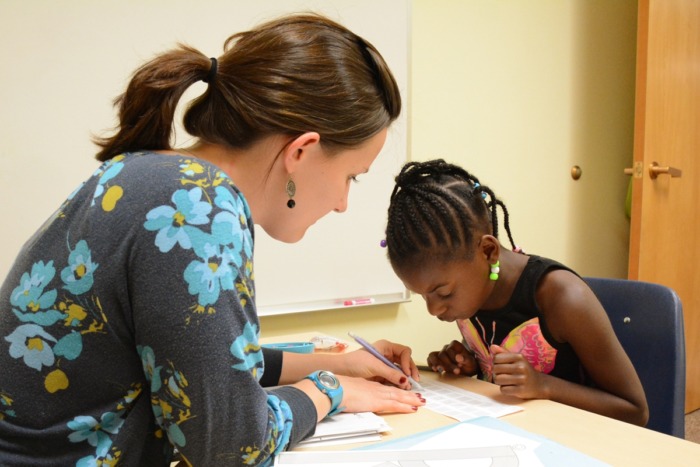
First Steps provides services from birth through age two in the child’s natural environment. Since children with hearing loss are at risk of developmental delays, they’re often recommended to employ developmental, physical, speech or occupational therapy services.
Easterseals’ Director of Early Intervention Services Leann Faust has experience serving children and families as a speech-language pathologist in their homes.
“Speech-language pathologists are frequently brought in and can work with the families and other supportive providers to help the child develop stronger speech and language skills,” she said. “This may include teaching the families how to more effectively model sounds and language using visual and tactile cues or how to help manage their child’s hearing devices when appropriate. We often introduce simple sign language or use of pictures to families to help facilitate communication with very young children.”
While pictures could be considered “low-tech” assistive technology, there are many options for more advanced means of communication.
Accommodating Through Technological Advancements
The first major organization devoted to alternative and augmentative communication (AAC) devices was the Prentke Romich Company, which was founded in 1966. Its first communication device was a typing system based on a discarded Teletype machine. In 1984, the company introduced the Touch Talker with Minspeak®, a portable, speech-generating device through which users could press buttons corresponding to various pictures and phrases to communicate electronically.
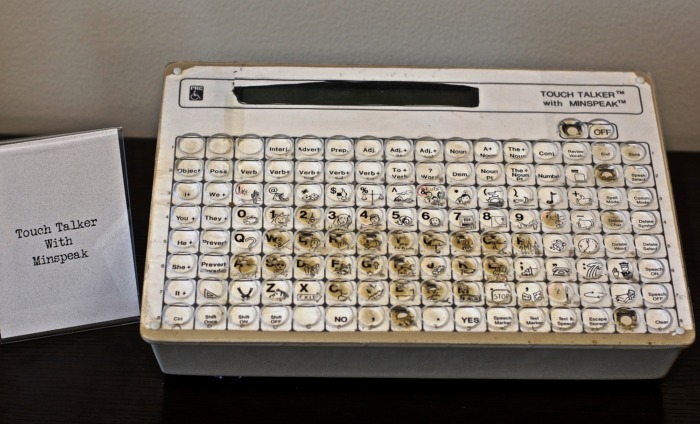
Jumping forward to today, you can find this kind of technology in an app on your smartphone. Take CoughDrop, for example. It provides users with a simple interface of illustrated, electronically voiced words and phrases.
In this video interview, Lindsay Waldrop of Utah Autism Academy spoke to how the use of these simple buttons led to an emotional breakthrough for her son, who has autism.
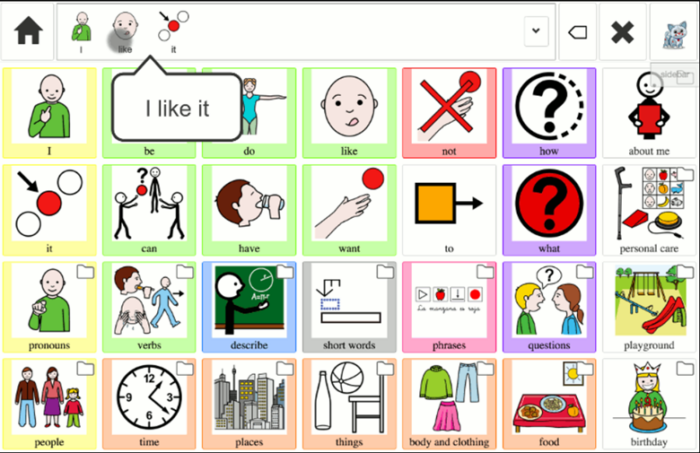
“There was a particular time where Hayden was home, and I couldn’t figure out what he was upset about,” she said. “He clicked on (the button for) ‘head,’ and he clicked on ‘sad.’ I thought that was huge. That’s the first time he’s ever told me something about the way he was feeling, which was amazing.”
For deaf, hard-of-hearing or speech-impaired Hoosiers, there is Relay Indiana, a free service that allows users with assistive telecommunication devices to communicate with standard telephone users through specially-trained operators who relay the conversation. Hearing-impaired callers typically use a CapTel (captioned telephone), which has an LCD screen to display text in real time as the relay operator speaks to them through a voice-recognition device.
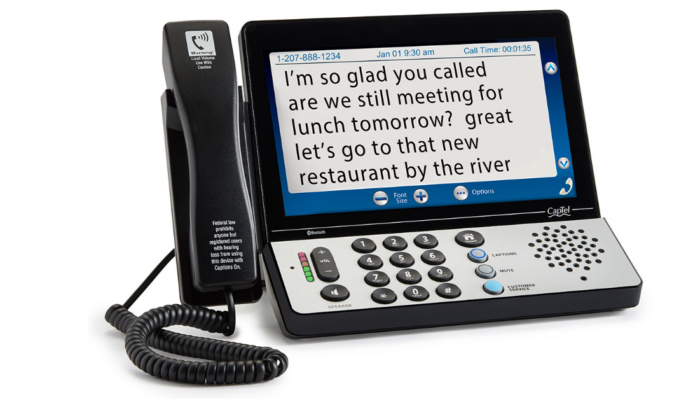
Assisting During Aging
Of course, speech and hearing issues can affect people at any stage of their lives. In regard to therapy, Faust noted some key differences in the best approach to adults as opposed to children.
Developmental stage: “Children with speech or communication issues are typically at a developmental stage where they are learning and acquiring language skills. Their therapy focuses on foundational language skills such as phonetics, vocabulary, grammar and social communication. In contrast, adults who acquire hearing or communication issues later in life already have an established language foundation, so therapy may focus more on compensatory strategies, adapting to the new communication challenges and enhancing existing skills.”
Learning environment: “Children under the age of three receive First Steps early intervention services in their natural environments, either at home, in daycare or out in the community. On the other hand, adults may receive speech therapy in rehabilitation centers, hospitals or private practices, where the focus is more on individualized treatment plans tailored to their specific needs.”
Parental involvement: “When working with children, parental involvement is crucial. Speech therapists often collaborate closely with parents, providing guidance, training and strategies to support the child’s language development outside of therapy sessions. Parents become active participants in the therapy process. In contrast, when working with adults, there may be less emphasis on parental involvement, and the therapy may primarily involve the individual and the speech therapist.”
Communication methods: “Children with speech or communication issues may require a variety of communication methods based on their individual needs. This can include verbal speech, sign language, augmentative and alternative communication (AAC) devices or a combination of these approaches. Speech therapists working with children need to be flexible and adaptable in implementing different communication methods. In adults who acquire hearing or communication issues later in life, therapy may focus more on adapting existing communication skills, maximizing residual hearing or learning alternative communication methods, depending on the individual’s specific needs and preferences.”
Psychological and emotional aspects: “Working with children often involves addressing emotional and psychological factors that can impact their speech and communication development. Therapy is generally play-based in nature. In contrast, adults who acquire hearing or communication issues may also experience emotional challenges, but therapy may focus more on their adjustment to the changes, coping strategies and providing emotional support alongside speech therapy.”
In honor of Better Speech and Hearing Month, Faust added: “It’s important to note that every individual is unique, and any approach to assist them should be tailored to meet their specific needs, regardless of age.”
